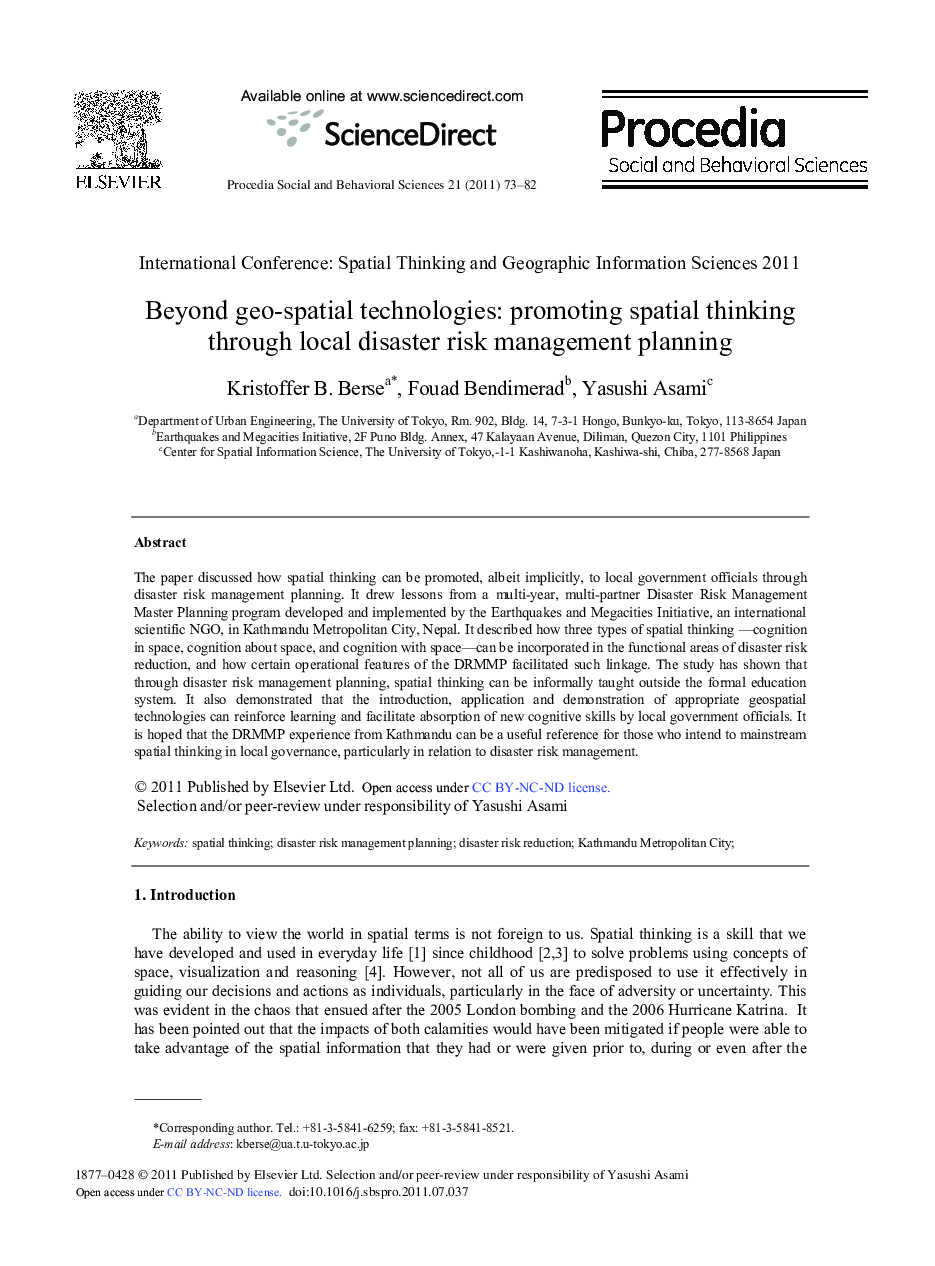| Article ID | Journal | Published Year | Pages | File Type |
|---|---|---|---|---|
| 1123928 | Procedia - Social and Behavioral Sciences | 2011 | 10 Pages |
The paper discussed how spatial thinking can be promoted, albeit implicitly, to local government officials through disaster risk management planning. It drew lessons from a multi-year, multi-partner Disaster Risk Management Master Planning program developed and implemented by the Earthquakes and Megacities Initiative, an international scientific NGO, in Kathmandu Metropolitan City, Nepal. It described how three types of spatial thinking -cognition in space, cognition about space, and cognition with space-can be incorporated in the functional areas of disaster risk reduction, and how certain operational features of the DRMMP facilitated such linkage. The study has shown that through disaster risk management planning, spatial thinking can be informally taught outside the formal education system. It also demonstrated that the introduction, application and demonstration of appropriate geospatial technologies can reinforce learning and facilitate absorption of new cognitive skills by local government officials. It is hoped that the DRMMP experience from Kathmandu can be a useful reference for those who intend to mainstream spatial thinking in local governance, particularly in relation to disaster risk management.
